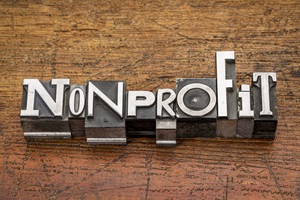 Nonprofit organizations encounter many of the same risks as their for-profit counterparts. Theft, fundraising fraud, compliance issues and liabilities associated with professional duties can cause nonprofits to suffer financial and reputational harm. Nonprofits are also obligated to honor contributions of time and money from donors, making these risks difficult to mitigate within constrained budgets. To minimize risks, nonprofit organizations must be strategic while striving to meet their mission. Consider the following strategies to decrease risks and liabilities for nonprofit organizations.
Nonprofit organizations encounter many of the same risks as their for-profit counterparts. Theft, fundraising fraud, compliance issues and liabilities associated with professional duties can cause nonprofits to suffer financial and reputational harm. Nonprofits are also obligated to honor contributions of time and money from donors, making these risks difficult to mitigate within constrained budgets. To minimize risks, nonprofit organizations must be strategic while striving to meet their mission. Consider the following strategies to decrease risks and liabilities for nonprofit organizations.
Common Types of Risks that Affect Nonprofit
Risks can encompass many things but typically refer to damage, liability, injury or loss, and can be internal or external to a business. Nonprofits can face many different risks, including the following:
- Theft – Similarly to other businesses, nonprofit organizations are vulnerable to theft. Employees, volunteers, new recruits and other individuals who have access to money, products or equipment may choose to steal from the organization.
- Cybersecurity Issues – Advancements in technology have created ample opportunities for nonprofits; however, the cybersecurity landscape is also riddled with risks. Data breaches and other cybercrimes can expose donor names, addresses, bank information or credit card details.
- Fraud – Nonprofits can fall victim to many types of fraud, such as fraud by impersonation. Criminals can pose as a particular nonprofit by using their logo, mission and other information to raise funds under the guise of charity.
- Compliance Problems – Nonprofit organizations are required to meet many of the same compliance rules and regulations as non-profit businesses. Failure to meet compliance requirements could put them at risk for costly repercussions.
Strategies to Decrease Risks and Liabilities
Before a nonprofit can plan for potential risks and liabilities, it must first identify them. Perform a nonprofit risk assessment to identify possible vulnerabilities that could affect the organization. This assessment is the first step in creating a comprehensive risk management plan.
Nonprofit risk management strategies can look different based on the individual organization but most have a few things in common. These strategies tend to approach risks proactively rather than reactively, meaning they identify potential risks and take actionable steps to prevent them from manifesting.
 Risk management within a nonprofit organization does not fall to just one person. Instead, it is the responsibility of staff, management and the nonprofit board, and all of these parties should work together for the best possible outcome. The board or committee, in particular, should be tasked with prioritizing the likelihood and severity of risks, overseeing risk mitigation, implementing preventive risk measures, reducing risks by implementing plans and maintaining administrative oversight to ensure compliance.
Risk management within a nonprofit organization does not fall to just one person. Instead, it is the responsibility of staff, management and the nonprofit board, and all of these parties should work together for the best possible outcome. The board or committee, in particular, should be tasked with prioritizing the likelihood and severity of risks, overseeing risk mitigation, implementing preventive risk measures, reducing risks by implementing plans and maintaining administrative oversight to ensure compliance.
Once possible risks have been identified, nonprofits can move onto managing them. The following steps can help nonprofits better manage nonprofit risks and liabilities.
1. Prioritize Risk by Severity
It is not possible for nonprofits to protect themselves from all risks. It is important to prioritize risks based on their potential effect on the business to determine which would have the greatest impact. Take into account various factors, such as the level of difficulty in preventing the risks, and what resources would be required if the business should fall victim to a risk.
2. Delegate Risks to Team Members
One person alone cannot guard against all risks and liabilities. Gather a team of leaders to help mitigate identified risks and put one person or team in charge of the top priority risks. This ensures that each threat receives the attention that it deserves and can be effectively managed.
3. Purchasing the Right Insurance
One of the best ways that nonprofit organizations can decrease their risks and liabilities is by acquiring the right insurance policies. Business insurances, such as general liability and errors and omissions (E&O) insurance, can help protect businesses against a wide range of threats.
General liability insurance can protect organizations against claims of bodily injury, property damage and reputational damage made against the business. Without liability insurance, nonprofits are left vulnerable to costly claims and legal fees. Organizations can achieve enhanced protection with E&O insurance. This type of policy protects nonprofits against claims of negligence or inadequate work.
4. Establish Risk Oversight
Mitigating risks and liabilities does not end with creating an initial strategy. Organizations must also ensure that these threats are continuously evaluated and managed. Establish a plan to regularly check in with the risk management team to determine the current level of risk. Risk reviews should be an integral part of the business operations.
5. Check with the Legal Team
Nonprofit organizations must adhere to a wide range of rules and regulations. Violating compliance could result in costly fees, or a nonprofit losing its tax-exempt status. Before progressing with any risk management strategies that could affect the organization’s legal standing, request guidance from a business legal professional.
6. Communicate with Employees
 Employees of nonprofit organizations can pose certain threats that put the business at risk for financial and reputational damage. Improve communication between management and employees to ensure that all expectations are clear. Expectations of appropriate behavior, discrimination, harassment and other employment topics should also be outlined in an employee handbook that is made available to all staff members. Establish policies that aim to protect leadership, board members, staff and the organization as a whole.
Employees of nonprofit organizations can pose certain threats that put the business at risk for financial and reputational damage. Improve communication between management and employees to ensure that all expectations are clear. Expectations of appropriate behavior, discrimination, harassment and other employment topics should also be outlined in an employee handbook that is made available to all staff members. Establish policies that aim to protect leadership, board members, staff and the organization as a whole.
7. Perform Due Diligence with Volunteers
Nonprofit organizations rely heavily on volunteers to help drive their mission forward. Unfortunately, volunteers can pose unique risks that make the organization vulnerable to losses. Both volunteers and paid staff should be properly vetted and trained as a first line of defense for risk management.
Schedule a Consultation with the Business Benefits Group
Risk management for nonprofit organizations is an ongoing process that requires extensive time and oversight. Although going through the proper steps to decrease risks and liabilities may seem tedious, these essential measures can prevent nonprofits from suffering financial, operational or reputational harm.
The experienced team at Business Benefits Group is dedicated to helping nonprofit organizations stay protected against potential risks and liabilities. For more information or to request a consultation with a knowledgeable business consultant, contact BBG today.
